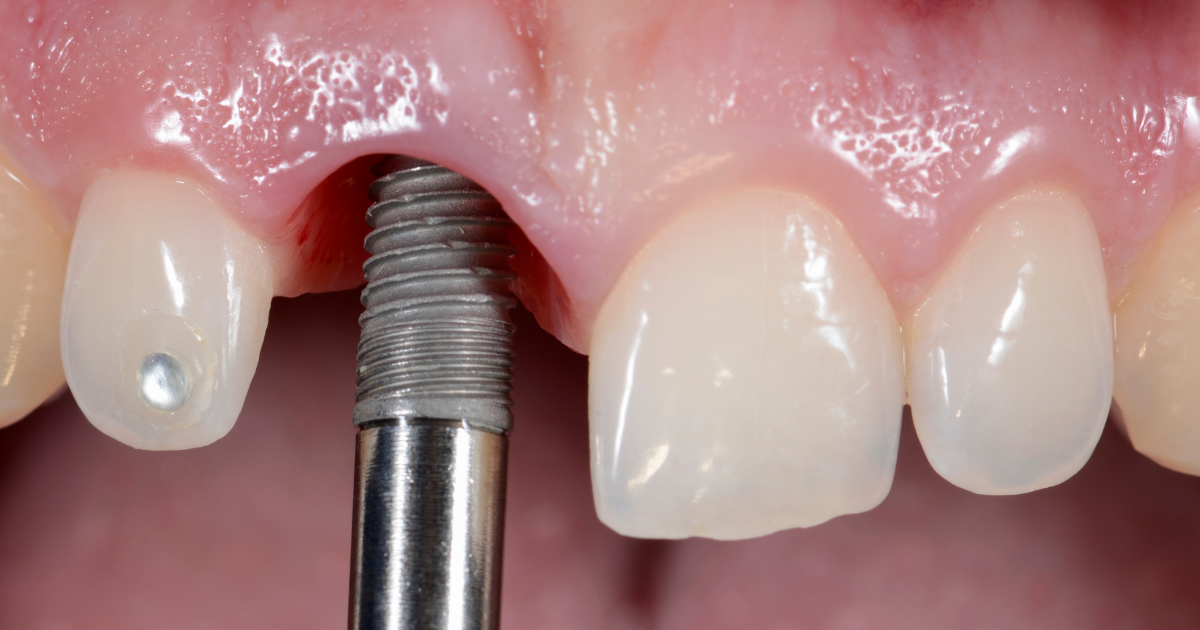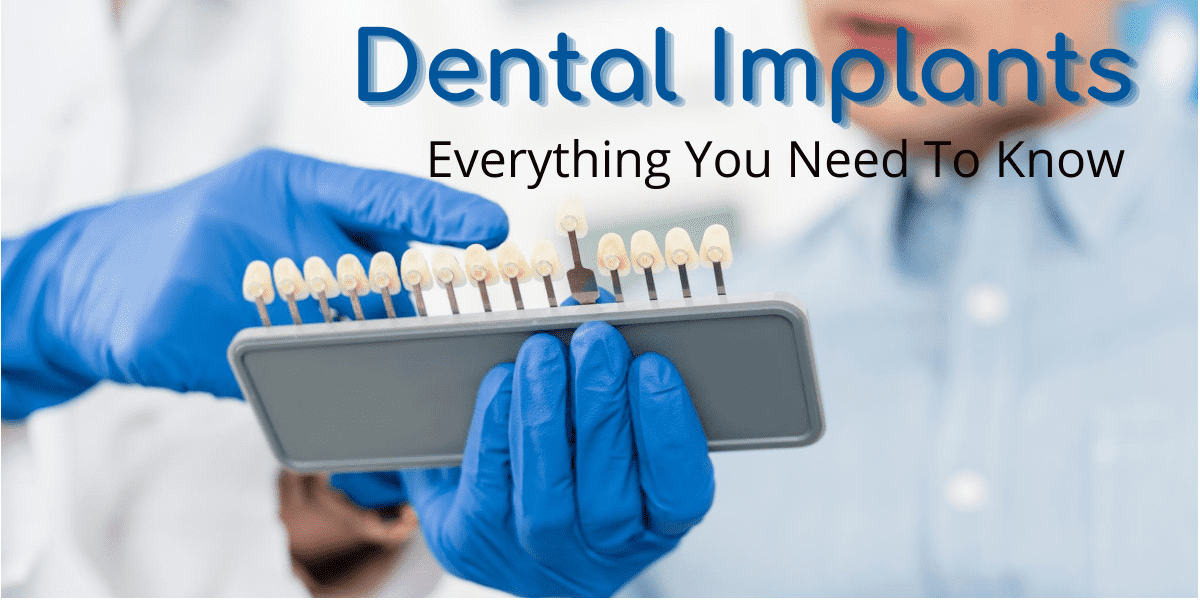What are dental implant’s pros, cons, and costs?
Dental implants are artificial roots for your teeth that replace the natural roots. A titanium screw or post will be placed into each tooth, which then attaches to an artificial root made of a substance such as bone, ceramic, or metal. The artificial root looks and feels like your natural tooth roots.
The implants are made of titanium which is the same material used for hip and knee replacements and is very strong. Implants are considered to be a permanent solution for missing teeth because they replace the root of your tooth with an artificial one that connects to the jawbone. Unlike dentures, implants are attached to your jawbone, which means that they will not slip or slide.
There are many advantages of having an implant over traditional dentures, including the following:
- More natural permanent teeth appearance
- Better speech and chewing abilities
- No need to worry about dentures slipping or sliding out of place, which can cause embarrassment, discomfort and a loss of appetite
- Can enjoy a more fulfilling meal with no concerns about wearing dentures
- Improved quality of life and self-esteem because you will have an easier time eating, speaking, and living life to the fullest
- Dental implants are not without their drawbacks, however. Implants have an annual cost of around $1,000 per year or more, depending on where you go.
Traditional dentures are cheaper, but they only last five to ten years before more work is needed. Learn more in-depth information about implants below:
What are dental implants?
Dental implants are a permanent solution for people who suffer from missing teeth, failing teeth, or chronic dental problems. Compared to other options like dentures, bridges, or crowns, they’re a popular long-term option. They fit, feel, and function like natural teeth.
Implants are titanium posts that are surgically fused to the jawbone. They provide a strong and durable anchor for replacement teeth, and they are becoming an increasingly popular choice for people who are missing teeth. Unlike traditional dentures or bridges, implants do not require any special care. In most cases, they last for the lifetime of the patient.
Implants are connectors that are permanently implanted into your jawbone and act as anchors for replacement teeth. The “crown” (or prosthetic tooth) is the part of the tooth that you can see. It’s usually made of zirconium or porcelain for durability and good looks. You can use implants to replace a single tooth, multiple teeth, or a full upper and/or lower set of teeth. If you need to restore a full arch, you may be a perfect candidate for the full mouth treatment. Implants are supported by 4 implants and attached to a full arch of teeth, providing you with a more permanent solution than dentures.
What materials are used in dental implant procedures?
The materials used in dental implant procedures vary depending on the type of implant system being used. However, most implants use titanium, which is known for its strength and biocompatibility. The quality of prosthetic teeth may vary depending on the manufacturer and the price can be more expensive than other tooth-replacement methods.
Materials for implants may vary in quality, with each having its own advantages and disadvantages. The most common types of materials are plastic, acrylic, metal, porcelain, and zirconia. Plastic is a more inexpensive material but it is not as durable as other materials. Acrylic is less expensive and can be used for temporary fittings, but it is not as durable as other materials. Acrylic/metal hybrids are very strong and durable, but they are often too heavy to feel natural. Porcelain is the most durable material and it also looks the most natural.
How successful are dental implants?
The success rates of implants vary depending on a number of factors such as the quality of the implant, how well it was placed, and how good the patient’s oral health is. However, with proper care and maintenance, implants can be very successful long-term investments.

How does a dental implant work?
A dental implant is a titanium post that is surgically placed into the jawbone to replace a missing tooth. The implant acts as an anchor for a replacement tooth, which can be either a dental crown or a bridge. Implants are becoming increasingly popular because they are durable and look natural.
When you are ready for implants, there is a 3 to 6 month waiting period for the implant to integrate with your jawbone. This healing time is necessary for the implant to become stable and function like a natural tooth root. If your body is unable to heal properly, the implant may not be successful. After the healing period, a restoration will be placed on top of the implant. A dental crown, implant-supported bridge, or implant-supported denture can be used to restore form and function to your smile. No one will know you have implants unless you tell them.
Step 1: Dental implant consultation
At our dental implant center, the first step in the tooth replacement process is a complimentary consultation. During this consultation, we will discuss your needs and determine if implants are the best option for you. Age is not a barrier to implants; people of all ages are choosing them for tooth replacement.
During your dental implant consultation, the dentist will take x-rays and medical history. You’ll also have the opportunity to ask any questions you may have about implants. The consultation is free, so it’s a good time to learn more about this treatment option.
Step 2: Implant placement
Implants are placed in the jawbone and a small amount of local anesthesia is used to make it comfortable for patients.
If there is enough bone present in the jawbone, the dentist can go ahead and place the dental implant. If not, a bone graft may be necessary to add more bone mass. This procedure is usually done at the same time as implant placement.
Step 3: Healing period
After the initial steps of the PAA, the process has been completed, there is a waiting period of 3 to 6 months before full integration can take place. This allows for both parties to fully assess the situation and make preparations for successful integration.
The success of the dental implant procedure depends on your body’s ability to heal. The healing process can take anywhere from a few weeks to a few months, depending on the individual. During this time, it is important to eat a balanced diet and avoid any activities that could put stress on the implant.
Step 4: Place your restoration
There are a variety of ways to restore your smile after losing teeth, and implants are one of the most conservative approaches. Implants have a 98% success rate, so you can be confident that you’re making a good decision. Additionally, no one will know that you have implants unless you tell them!
At our dental implant center, we understand that tooth loss can be a traumatic experience. That’s why we offer complimentary consultations to help you see how our experienced team can help you with tooth replacement. Implants are placed in the jaw bone or gums to replace missing teeth. Oftentimes, implants are used to anchor false teeth. If you’re looking for an alternative to dentures or bridges, implants may be right for you.
Types of dental implants
Dental implants are a type of dental restoration that replaces missing teeth. They are made up of three parts- the implant, abutment, and crown. The implant is surgically placed into the jawbone. The abutment connects the implant to the crown which is what is visible in your mouth. There are different types of implants, but the most common are screws, cylinders, or blades. Implants can be used for patients with minimal bone height because they rely on the jawbone for support. Before getting implants, teeth are usually loose because there is no tooth root to hold them in place.
There are three types of implants- endosteal, subperiosteal, and transosteal. After the dental implant surgery, the teeth are fixed in place with titanium posts that fuse with the jawbone. The endosteal implant is placed in the bone marrow while the subperiosteal implant is placed on top of the bone. The transosteal implant is a hybrid of both methods and is usually used for people who have insufficient bone height or density.
Endosteal (in the bone)
Endosteal implants are the most common type of dental implant. They are made from body-safe materials, such as titanium, and resemble small screws. They are placed in the jawbone, holding prosthetic teeth. When there’s not enough healthy jawbone available to support an endosteal implant, an osseointegrated implant can be used. This is a type of implant that is placed in the jawbone and directly supports the prosthetic teeth.
Endosteal implants are those that are inserted into the jawbone. They usually hold one or more prosthetic teeth, acting as an alternative to bridgework or removable dentures.
Subperiosteal (on the bone)
Subperiosteal implants are implants that are inserted under the gum tissue, as opposed to being drilled into the jawbone. There are two procedures required for the insertion of subperiosteal implants: first, your gum line will be cut open near tooth loss in order to expose the bone; second, the implant will be inserted under the gum tissue.
Subperiosteal implants are inserted onto or just below the bone surface. They were once a more common type of implant, but they are now used less and less because of improvements in imaging, grafting, and implant design. The most viable option for conditions that may be caused by bone grafting or natural jaw bone support implants.
Subperiosteal implants are placed on top of the bone instead of underneath it. This makes the healing process faster because there is less surgical trauma. Additionally, these implants can be placed more quickly than other options, such as bone grafting.

What are the advantages of dental implants?
Dental implants are a permanent solution to missing teeth. Unlike dentures, which can be uncomfortable and often need to be adjusted, implants are designed to fuse with the bone and provide a more comfortable fit. They also improve the appearance of your smile and can help you speak more clearly. Additionally, dental implants can provide a boost in self-esteem.
Dental implants have many advantages over other tooth-replacement methods. They are permanently anchored into the jawbone, so they improve oral health by not altering healthy teeth as bridgework or dentures do. Additionally, each individual implant improves access between teeth and oral hygiene- making it much easier to keep your smile looking great! Lastly, implants are long-lasting- typically lasting between 10 and 20 years with proper care. Unlike dentures, which must be removed for cleaning, implants can be cleaned with a simple brush and water- making them much more convenient.
One of the main advantages of implants is that they eliminate the need for messy adhesives. You will no longer have to worry about your dentures falling out or becoming loose throughout the day.
What are the advantages of dental implants?
Although implants are a popular and common treatment for missing teeth, they are not without their disadvantages. One of the main disadvantages is the risk of infection. This can occur if bacteria enter the implant site or if the implant is not properly cleaned. There is also a risk of inflammation and pain.
Bone grafting procedures may be required prior to dental implant placement in order to ensure that the implant will be adequately supported. This can add to the overall cost of treatment. Additionally, there is a risk of implant failure or infection, which may require additional treatment.
Though dental implants are a great option, they come with a few disadvantages. The upfront investment for implants can be costly, but it can pay off in the long term because they typically last 10-15 years. Additionally, there is a slight risk of implant failure or infection.
How much do dental implants cost?
The cost of implants varies depending on a number of factors, including the type of implant, the location where it is placed, and the materials used. Generally speaking, implants are not cheap. However, they can be a more affordable option in the long term than other forms of tooth replacement such as dentures or bridges. Additionally, additional procedures may be required to ensure the long-term health and stability of dental implants.
Implants are a popular choice for those who are looking to replace missing teeth. The cost of implants will vary depending on a number of factors, such as the number of teeth that need to be replaced and the number of implants that are required. In addition, each case is tailored specifically for the individual patient, so it’s important to consult with a dentist to get an accurate estimate.

How do I care for dental implants?
Implants are a great way to replace missing teeth. They are made of titanium and look and feel like real teeth. They also require the same care as regular teeth. This includes brushing, flossing, and seeing your dentist for regular checkups.
To properly care for your implants, you should brush and floss at least twice a day, rinse with antibacterial mouthwash regularly, and have regular dental checkups. This will help keep your implants clean and healthy and reduce the likelihood of developing gum disease or other oral health problems.
- Comprehensive Guide to Pediatric Dental Care: Expert Tips for Ensuring Optimal Oral Health in Children - February 3, 2025
- Poor Teeth Enamel: Unveil Causes and Treatments for Loss of Enamel or Enamel Hypoplasia - January 12, 2024
- The Best Toothpaste for Bad Breath: Which Toothpaste is the Best for Fresh Breath? - December 6, 2023


